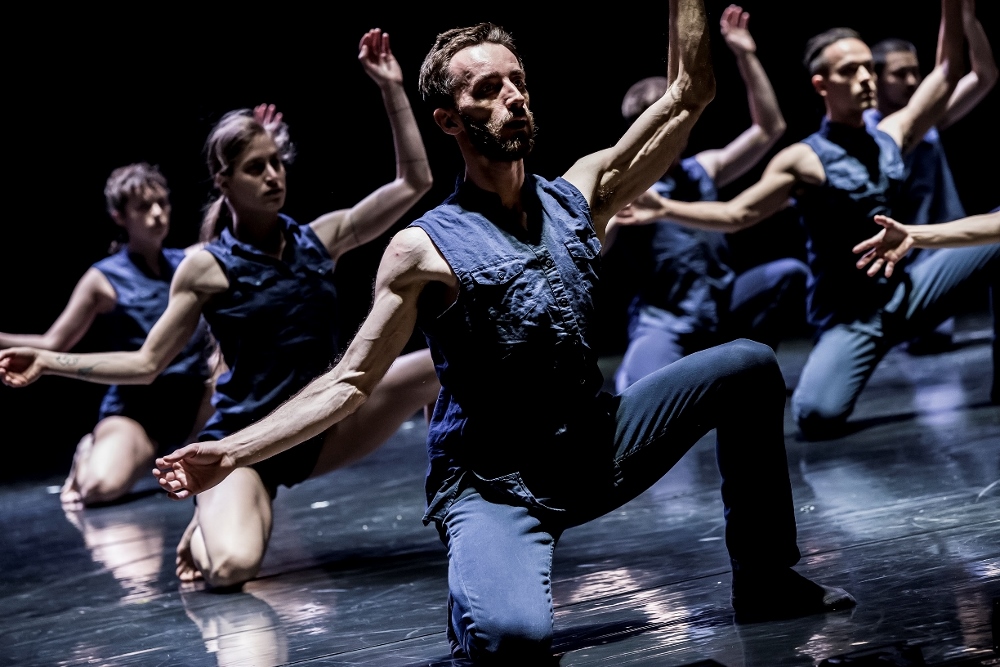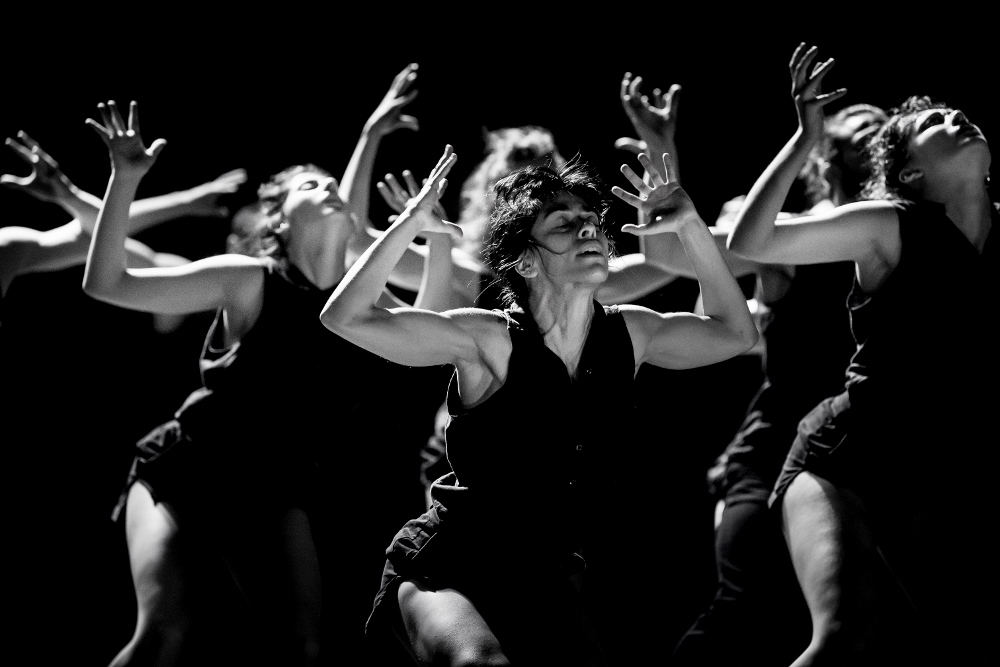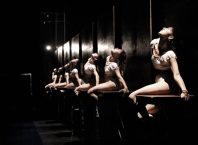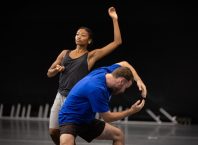
A Good Citizen, Rami Be’er’s powerful new work, opens with a striking scene. One by one, dancers enter the stage to stand under a spotlight, almost as if they were under interrogation. Solemnly, each one announces his or her name, followed by the descriptive label: a good citizen (in Hebrew: ezrach tov). Then that dancer moves to the other side of the stage, where a group slowly accumulates, as another dancer enters to repeat the same ritual. It is almost like an assembly line that manufactures good citizens. To complete the image, the dancers are all dressed in identical blue costumes reminiscent of a worker’s uniform. Yet this scene of rigid, almost menacing conformity, is also shot through with a dissonant and vital chord. There is a wonderful diversity in the composition of the Kibbutz Contemporary Dance Company, and as they state their names and claim the title of “ezrach tov“, their voices and different accents are a declaration of individuality. With the dancers’ expressive presence and riveting performances heightening the sense of oppression in the pressure to conform, Be’er’s exploration and critique on the making of “a good citizen” delivers a strong message.
Artistic Director of the Kibbutz Contemporary Dance Company, Rami Be’er is known for presenting a complete vision in his dance works, creating the choreography, soundtrack, costumes, lighting and set design. The impact here is tremendous, as all elements work together to convey the work’s underlying themes. Particularly striking is the soundtrack, which plays a central role in this piece. A Good Citizen is informed by a prose piece by Swiss writer Robert Walser (1878 – 1956), on being “a good citizen.” This text, in Hebrew translation by Ran HaCohen, is incorporated in the soundtrack, in the sonorous voice of actor Amir Kriaf. The speaker in this text is “a good citizen” because he avoids having opinions and doesn’t think too much. Good citizens keep their head down metaphorically, a literal gesture that is seen several times within Be’er’s work. On several occasions within the soundtrack one hears a melody that is interfered with, its beauty disrupted, often by sounds of machinery, such as a manual typewriter or ticking clock. The popular Hebrew children’s song Bimdinat Hagamadim (could be translated as “in the land of the Lilliputians”, lyrics by Ella Vilensky-Amitan, 1940) in an unusual arrangement is the soundscape for a complex scene. Couples move slowly around the stage, one behind the other, holding on to the shoulder and waist of the person in front, both with heads down, while two men intermittently enter the stage space, dancing a lively dance with a folk/country feel to it, wearing expressions of exaggerated enjoyment, almost as if they had been commanded to have fun.

Much of the movement language is characterized by unison, which functions on several levels. Visually, unison is very compelling and powerful, all the more so because the dancers of the Kibbutz Contemporary Dance Company are so strong and agile, with beautiful technique. Thematically, the unison underscores the pressure to conform, the security in being part of the crowd. Yet as a counterpoint to the unison and its movement language that often reflects a mechanical sensibility, are the many duets and solos, expressing the bold individuality of the dancers as they convey a range of feeling – frenzied, searching, seductive – imbued with beauty and grace. In one of the many significant moments of A Good Citizen, a female dancer moves across the front of the stage, while – as is often the situation in this piece – the action continues behind her. Her progress is characterized by sliding movement evoking the sense of an automaton, yet her expression and hand gestures reflect a sense of anguish; the suffering of a soul trapped in a machine.
A Good Citizen is a work that makes a strong statement, yet does not offer a neat conclusion, nor claim that such exists. In its beauty and tensions, Be’er’s work opens questions. As the final scene plays out, echoing elements of the work’s opening with the voices of the dancers intoning “ezrach tov”, the lights, and the questions, are turned toward the audience.





